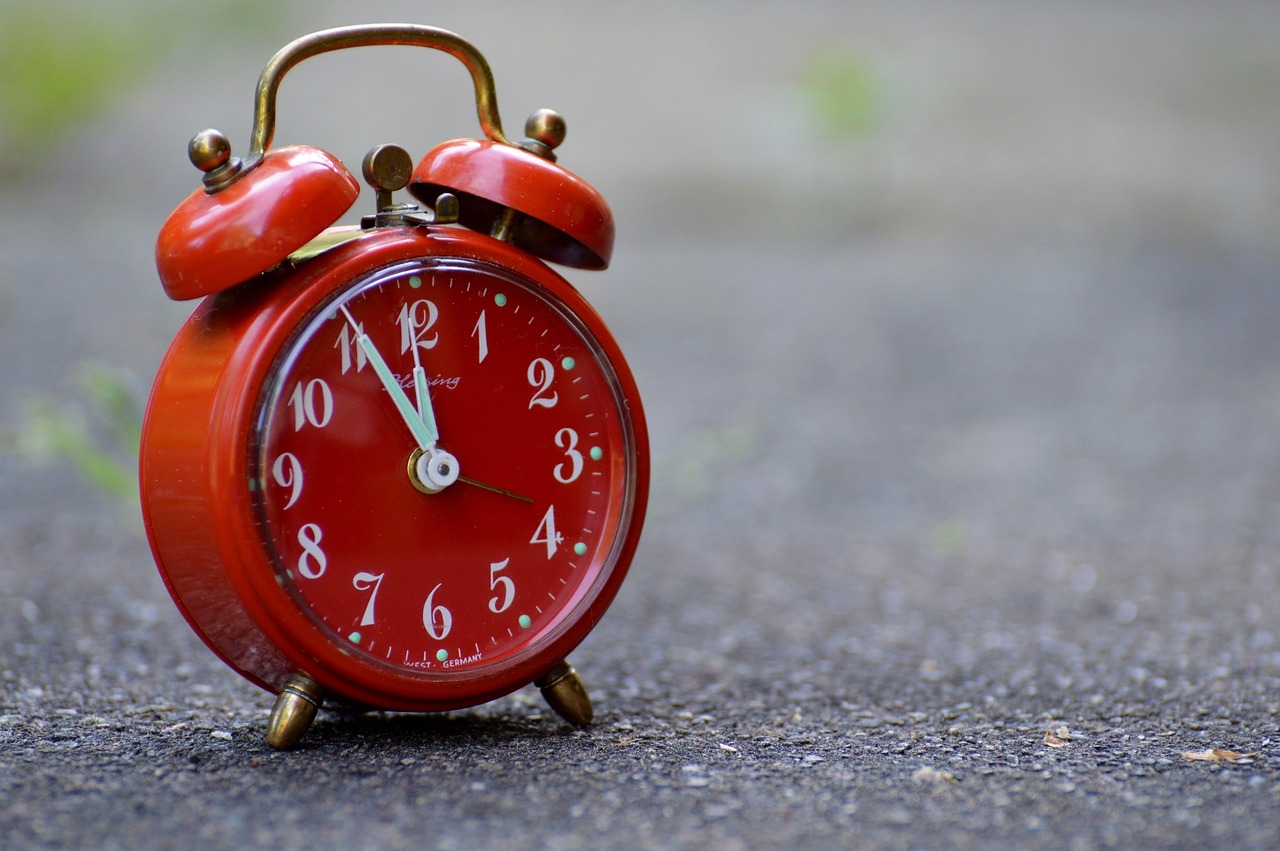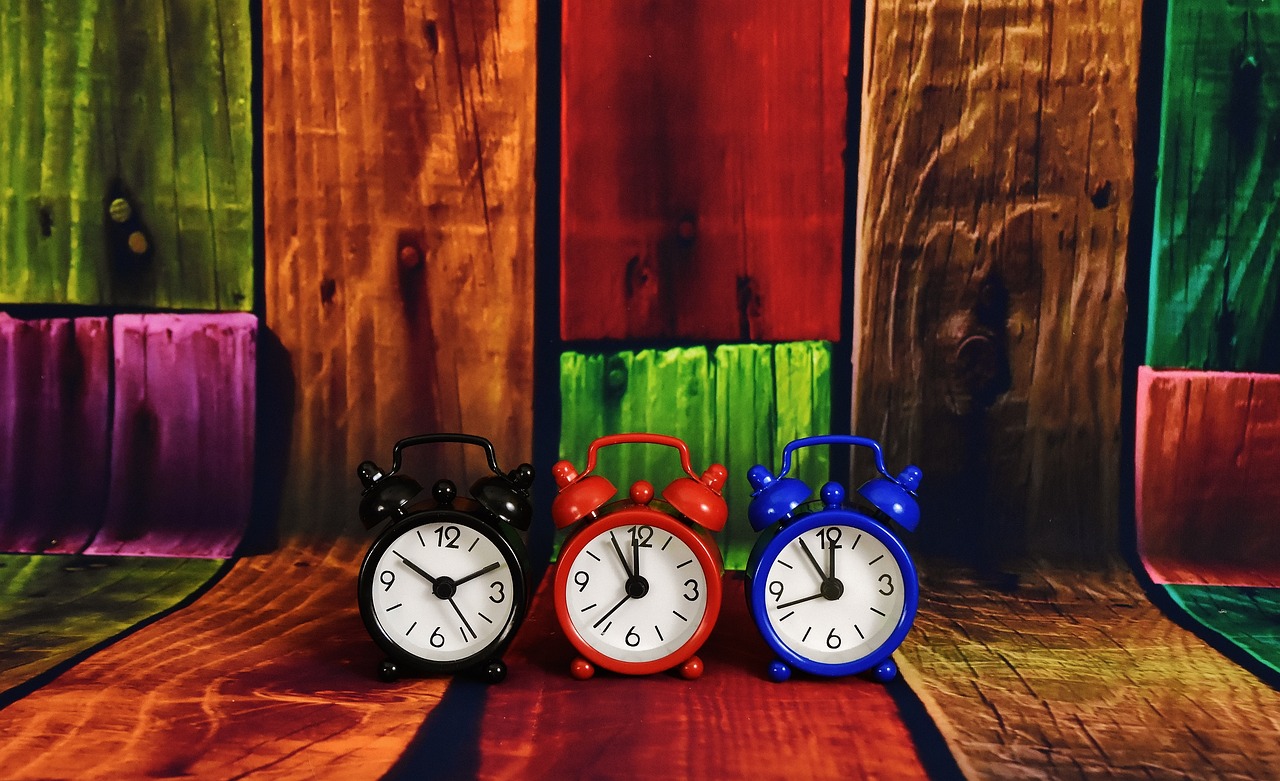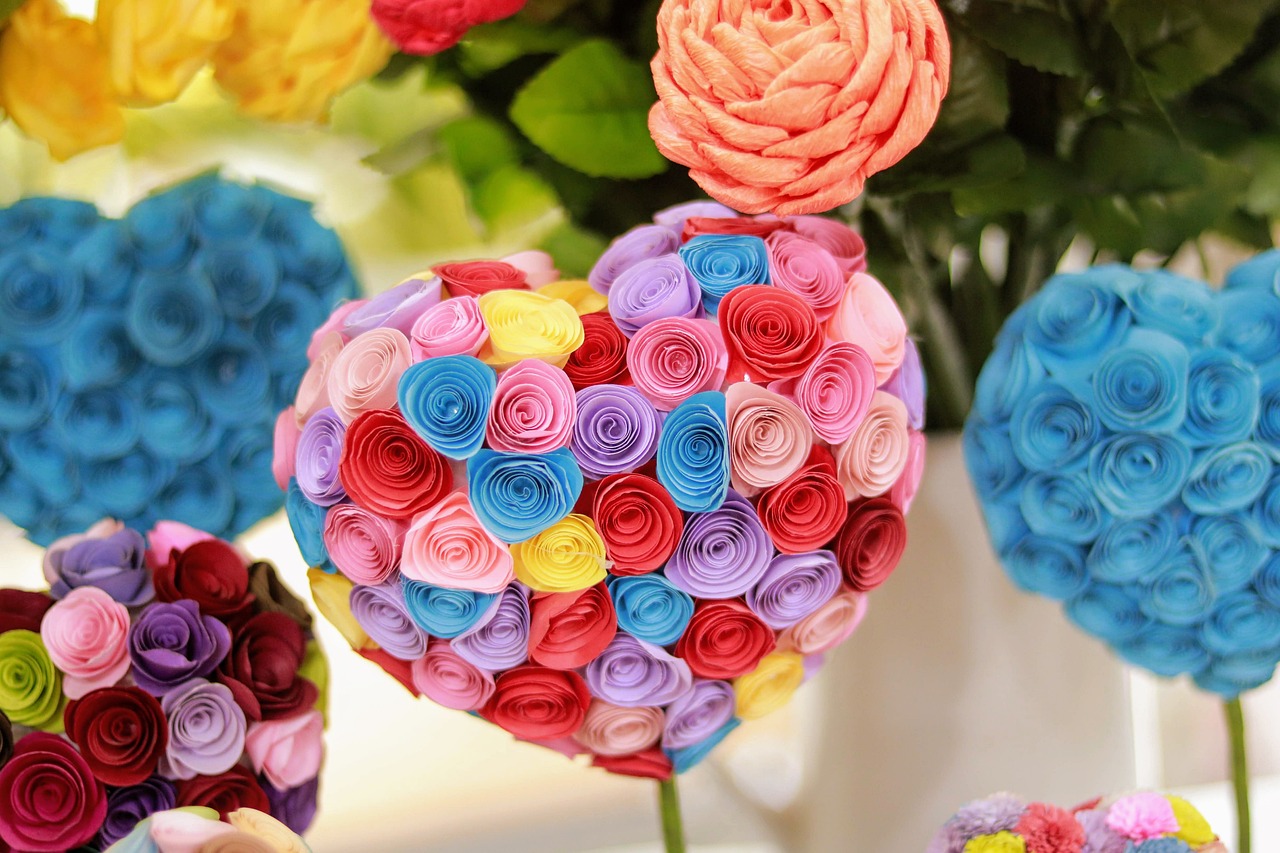Creating Clock Crafts with your Kids
Creating clock crafts with your kids is not just a delightful way to spend time together; it’s an opportunity to blend fun with learning! Imagine the laughter and excitement as your little ones dive into a world of colors, shapes, and numbers. Crafting a clock can transform a simple afternoon into an adventure where creativity flourishes, and essential skills are developed. Not only do these activities promote bonding, but they also serve as a fantastic avenue for teaching kids about time in a hands-on manner.
As you embark on this crafty journey, you’ll find that each project is a stepping stone toward enhancing their fine motor skills. From cutting and gluing to decorating and assembling, every action helps improve their hand-eye coordination and dexterity. Plus, the thrill of watching their very own clock come to life is an experience that can ignite a passion for crafting and learning that lasts a lifetime!
Have you ever noticed how kids are naturally curious? They love to explore, touch, and create. By engaging them in clock crafts, you can satisfy their curiosity while teaching them about the concept of time. It’s like creating a mini classroom right at your dining table! As they paint, draw, and assemble, you can weave in lessons about the hours, minutes, and the significance of being on time. It’s a win-win situation where education meets creativity.
Moreover, clock crafts can be customized to fit any theme or season. Want to celebrate spring? Decorate the clock with flowers and butterflies! Feeling festive for the holidays? Add snowflakes or ornaments! This flexibility allows kids to express their unique personalities while learning a valuable skill. The sky is the limit when it comes to imagination!
So, gather your supplies and let the crafting begin! Whether you’re making a simple paper plate clock or a more intricate cardboard box clock, the joy of creating something together is what truly counts. Remember, it’s not just about the final product; it’s about the laughter, the mess, and the memories you’ll create along the way. So, what are you waiting for? Dive into the world of clock crafts today!
Q: What age is appropriate for clock crafts?
A: Clock crafts can be enjoyed by kids of all ages! Younger children may need more assistance, while older kids can take the lead in creating their own designs.
Q: What materials do I need for clock crafts?
A: Basic materials include paper plates, markers, scissors, clock mechanisms, and any decorative items like stickers or glitter. You can find most of these at local craft stores or online.
Q: How can I incorporate learning into clock crafts?
A: Use the crafting time to teach your kids about numbers, how to tell time, and the importance of punctuality. Ask them questions about what they are creating and encourage them to explain their designs.
Q: Are clock crafts messy?
A: Yes, crafting can get messy! It’s a good idea to set up a designated crafting area with easy-to-clean surfaces and use washable materials whenever possible.
Q: What should I do with the finished clocks?
A: Display your kids' creations proudly! You can hang them on the wall, place them on a shelf, or even gift them to family members as a special keepsake.

Benefits of Clock Crafts
Clock crafts are not just a fun way to spend time with your kids; they come packed with a variety of benefits that can enhance your child's development in multiple ways. First and foremost, these crafts help improve time-telling skills. As children engage in creating their own clocks, they become more familiar with the concept of time, learning to read both analog and digital formats. This hands-on experience transforms a sometimes abstract concept into something tangible and relatable.
Moreover, clock crafts foster creativity in children. When kids are given the freedom to decorate and personalize their clocks, they unleash their imagination. They can choose colors, designs, and even themes that resonate with their personalities. This creative expression is crucial for their emotional development, allowing them to communicate feelings and ideas visually.
In addition to creativity, these projects enhance fine motor skills. Activities such as cutting, gluing, and assembling clock parts require precision and coordination, which are essential for young children's physical development. As they manipulate materials, they're not just crafting; they're also honing skills that will be beneficial in their everyday lives, such as writing and using tools.
Engaging in clock crafts also serves as a wonderful bonding opportunity between parents and children. The collaborative nature of these projects encourages conversation and teamwork. You might find yourself laughing together over a funny design choice or discussing the importance of time management while you work. This bonding experience is invaluable, as it strengthens family ties and creates lasting memories.
Lastly, clock crafts can be a springboard for further learning opportunities. As you create together, you can introduce concepts like time intervals and the importance of punctuality. For example, you could explain how being on time can affect daily routines, from arriving at school to meeting friends. This makes the crafting experience not only fun but also educational.
In summary, the benefits of clock crafts extend far beyond mere entertainment. They are a multifaceted activity that promotes skill development, creativity, and family bonding. So, grab those materials and start crafting; the rewards are more than just a beautiful clock!

Materials Needed for Clock Crafts
When diving into the world of clock crafts with your kids, having the right materials on hand can make all the difference. You don't need to break the bank or spend hours searching for rare supplies; most of the essentials can be found around your home or at your local craft store. To kick off your crafting adventure, gather the following items:
- Paper Plates: These serve as the perfect base for your clock. They are sturdy, easy to decorate, and provide a large surface for numbers and designs.
- Markers or Paint: Kids love to express their creativity! Using vibrant colors, they can personalize their clocks, making each one unique.
- Scissors: Safety scissors are ideal for younger children, allowing them to cut out numbers or shapes safely.
- Clock Mechanisms: You can purchase these from craft stores or online. They typically come with clock hands and a battery compartment, making it easy to turn your craft into a functional timepiece.
- Glue or Tape: To secure various elements together, you'll need a reliable adhesive. Glue sticks can be less messy, while tape can provide instant results.
- Decorative Items: Think stickers, glitter, or even bits of fabric! These can add flair to your clocks and make them stand out.
Before you begin, it's also a good idea to set up a designated crafting area. This will help contain the mess and give your kids a dedicated space to let their imaginations run wild. You might even want to cover the table with old newspapers or a plastic tablecloth for easy cleanup. Remember, the goal is to have fun and create memories, so don’t stress too much about perfection!
By gathering these materials, you’re not just preparing for a craft; you’re setting the stage for a delightful learning experience. As your children engage in creating their clocks, they’ll not only learn about time but also develop fine motor skills and boost their creativity. So, roll up your sleeves, and let the crafting begin!

Simple Clock Craft Ideas
When it comes to clock crafts, the possibilities are as endless as the hours on the face of a clock! These projects not only allow your kids to express their creativity but also provide an excellent opportunity for them to learn about time in a hands-on way. Let’s dive into a couple of simple clock craft ideas that are sure to keep your little ones engaged and excited.
The first idea is the Paper Plate Clock. This craft is incredibly easy and requires minimal materials. All you need is a paper plate, some colorful markers, and a basic clock mechanism. Start by letting your kids decorate the plate with their favorite colors and designs. They can draw numbers around the edge of the plate, or even use stickers to make it more visually appealing. Once the decorative part is done, you can help them attach the clock mechanism to the center of the plate. This interactive project not only teaches them how to tell time but also boosts their fine motor skills as they work with different tools and materials.
Another fantastic idea is the Cardboard Box Clock. This craft is perfect for those who love to recycle! Grab an old cardboard box, preferably one that’s not too big. Your kids can cut out a circular shape from the box to serve as the clock face. After that, they can paint or color it however they like. The fun part comes next: adding the numbers! They can use buttons, beads, or even draw the numbers directly onto the cardboard. To finish it off, insert a clock mechanism in the middle, and voila! They have created a functional clock while learning about the importance of recycling and reusing materials.
Both of these clock crafts are not only simple to make but also provide a fantastic platform for discussing time-telling concepts. As your kids engage with these projects, you can incorporate learning moments about time intervals, such as seconds, minutes, and hours. You might even ask questions like, “What time do you think we should start dinner?” or “How many hours until bedtime?” This makes the crafting experience richer and more educational.
In addition, these crafts can be tailored to different age groups. For younger children, you might want to keep the designs simple and focus on basic time-telling skills. For older kids, you can introduce more complex designs and even encourage them to use mathematical concepts, such as addition and subtraction, to figure out time differences. The key is to make it fun and engaging, allowing their creativity to shine through!
So gather your materials, unleash your imagination, and get ready to create some beautiful clocks that not only tell time but also tell a story of creativity and learning!

Paper Plate Clock
Creating a is not just a fun craft; it's a fantastic way to engage your kids in learning about time while also allowing them to express their creativity. Imagine this: you have a simple paper plate, and with a few basic supplies, it transforms into a colorful, functional clock! This project is perfect for children of all ages, as it combines art and education in a way that keeps their little hands busy and their minds active.
To start, gather the materials. You'll need:
- A paper plate
- Markers or paint for decoration
- Scissors
- A clock mechanism (which can be purchased at craft stores or online)
- Glue or tape
- Optional: stickers, glitter, or any other decorative items
Once you have everything ready, the fun begins! First, let your kids unleash their creativity by decorating the paper plate. They can use markers to draw colorful designs, paint it in their favorite colors, or even stick on some fun stickers. This is where the magic happens; not only are they crafting, but they are also learning to express themselves through art.
Next, it's time to add the numbers. You can either draw them directly on the plate or use pre-made stickers. This is an excellent opportunity to teach your kids about the numbers on a clock and their positions. Make sure they understand the concept of hour and minute hands, as this will help them when they start telling time. Once the numbers are in place, you can move on to attaching the clock mechanism. Follow the instructions that come with it; usually, it involves making a small hole in the center of the plate and inserting the clock hands.
After everything is assembled, you now have a beautiful paper plate clock that your kids can proudly display in their room or even use to practice telling time. This project not only reinforces their understanding of how to read a clock but also enhances their fine motor skills through cutting, gluing, and assembling. Plus, every time they check the time, they'll feel a sense of accomplishment knowing they made it themselves!
So, gather those supplies and get ready for a delightful crafting session with your kids. The joy of creating something together is priceless, and the lessons learned along the way are invaluable. Remember, crafting is not just about the end product; it's about the journey you take together!
Q: What age is appropriate for making a paper plate clock?
A: This craft is suitable for children aged 4 and up, with varying levels of adult supervision depending on the child's skill level with scissors and other tools.
Q: How long does it take to complete the craft?
A: The entire process can take anywhere from 30 minutes to an hour, depending on how detailed the decorations are and how familiar the child is with assembling clock mechanisms.
Q: Can we use other materials instead of a paper plate?
A: Absolutely! You can use cardboard, foam sheets, or even a wooden circle. The key is to ensure it's lightweight enough to hold the clock mechanism.

Cardboard Box Clock
Creating a is not just a fun project; it's an excellent way to teach kids about recycling and the concept of time in a hands-on manner. Imagine taking an ordinary cardboard box that would otherwise end up in the trash and transforming it into a vibrant, functioning clock! This project not only sparks creativity but also enhances fine motor skills as kids cut, glue, and assemble their clocks. Plus, it’s a fantastic opportunity to bond with your little ones while they learn something valuable.
To kick off this exciting craft, gather the following materials:
- Cardboard box (any size will do, but a shoebox works great)
- Colorful markers or paints
- Clock mechanism (can be purchased online or at craft stores)
- Scissors and glue
- Ruler and pencil for measuring
Once you have everything ready, start by cutting a circular hole in the front of the box where the clock face will be. This is where the kids can really get creative! They can paint the box, decorate it with stickers, or even use glitter to make it sparkle. Encourage them to think about what colors or themes they want their clock to represent. After the box is decorated and the paint has dried, it's time to move on to the clock face.
Using a piece of cardboard or thick paper, create a circle that will serve as the clock face. Here, kids can practice their number recognition by placing numbers 1 through 12 around the circle. They can even add fun designs or drawings that represent each hour—like a sun for noon or a moon for midnight! Once the clock face is ready, attach it to the front of the box using glue.
Now comes the exciting part—installing the clock mechanism! This typically involves making a small hole in the center of the clock face and inserting the mechanism through it. Secure it from the back of the box and attach the clock hands according to the manufacturer’s instructions. Voila! You now have a fully functional cardboard box clock that your kids can proudly display in their room.
Not only does this project result in a beautiful piece of art, but it also serves as a practical tool for learning to tell time. Kids can practice setting the clock to different times and even create their own games around it. For example, you could ask them to set the clock to specific times and see how quickly they can do it. This simple yet effective craft combines creativity with education, making it a win-win for both kids and parents.

Incorporating Learning into Crafting
Integrating learning into crafting is like adding a secret ingredient to a recipe; it enhances the overall flavor of the experience! When you embark on clock crafts with your kids, you’re not just creating a fun project; you’re also opening the door to valuable lessons that can help them in their everyday lives. Think about it—while they’re busy painting, cutting, and assembling, they’re also absorbing important concepts about time, numbers, and even patience.
As your little ones dive into their clock-making adventure, take the opportunity to discuss various educational elements. For instance, you can teach them about numbers and their sequence. Explain how the numbers on the clock represent the hours and how they connect to the world around them. You might say, “When the big hand points to 12 and the little hand points to 3, it’s three o’clock! That’s when we have snack time!” This not only makes learning fun but also relatable.
Additionally, you can incorporate lessons about time intervals. Ask questions like, “How much time do we have until dinner?” or “If we start our craft at 2 PM, when will we finish?” This encourages them to think critically about how time works in a practical sense. You can even create a simple table to show different time intervals, which can be a great visual aid:
| Activity | Start Time | End Time |
|---|---|---|
| Crafting | 2:00 PM | 3:00 PM |
| Snack Time | 3:00 PM | 3:30 PM |
| Playtime | 3:30 PM | 4:30 PM |
Moreover, it’s important to instill the concept of punctuality in children. While they’re crafting their clocks, remind them how being on time is essential for various activities throughout the day. You might say, “If we finish our clock by 4 PM, we’ll have time to play outside before dinner!” This teaches them the value of time management in a fun and engaging way.
Finally, don’t forget to celebrate their achievements! Once the clocks are complete, take a moment to reflect on what they learned during the crafting process. Ask them what their favorite part was or what new things they discovered about time. This not only reinforces their learning but also builds their confidence. Remember, the goal is to make crafting a joyful learning experience that they’ll cherish and remember for years to come!

Tips for Crafting with Kids
Crafting with kids can be an incredibly rewarding experience, but let's face it: it can also get a bit messy! To make the most out of your crafting sessions, here are some essential tips to keep in mind. First and foremost, setting up a designated crafting area is crucial. This doesn't have to be a fancy space; it could simply be a table covered with an old tablecloth or newspaper to catch any spills. Having a specific area helps contain the chaos and makes cleanup much easier.
Next, consider using washable materials. Kids are naturally curious and sometimes a bit clumsy, so opting for washable paints, markers, and glues can save you a lot of stress. This way, if a little paint ends up on the table or their clothes, you won’t have to panic. Instead, you can enjoy the moment and focus on their creativity.
Another important tip is to allow for creative freedom. While it’s great to have a plan or a template, letting kids express themselves can lead to some truly amazing creations. Encourage them to add their own flair to their clock crafts—whether it’s using unique colors, adding stickers, or even drawing their favorite characters on the clock face. This personal touch not only enhances the project but also boosts their confidence and sense of ownership.
Additionally, be patient and embrace the imperfections. Remember, the goal here is to have fun and learn together, not to create a perfect masterpiece. If a clock doesn't look exactly like the one in the tutorial, that's okay! Every creation is unique, just like the little artists behind them.
Lastly, don’t forget to celebrate their achievements. Once the clocks are finished, take a moment to admire their hard work. You could even organize a mini "clock gallery" at home, where each child can display their craft. This will not only make them feel proud but will also encourage them to continue exploring their creative side.
Here are some common questions parents might have about crafting with kids:
- What age is appropriate for clock crafts? Clock crafts can be adapted for various age groups. Younger kids may need more assistance, while older children can take on more complex projects.
- How can I make crafting more educational? Incorporate lessons on numbers, time, and even basic math while crafting. This makes the experience both fun and educational.
- What should I do if my child loses interest? Keep the sessions short and engaging. If they seem to lose interest, suggest taking a break or switching to a different craft.

Showcasing Your Clock Creations
Once your little ones have poured their heart and soul into creating their very own clocks, it’s time to showcase these masterpieces! Not only does displaying their work boost their confidence, but it also allows them to share their creativity with family and friends. Imagine the pride on their faces when they see their clocks proudly displayed in your home! So, how can you effectively showcase these delightful creations? Here are a few ideas:
First, consider setting up a special display area in your home. This could be a dedicated shelf, a wall-mounted display board, or even a table where their clocks can be arranged. You can create a mini-exhibition that highlights each clock, allowing guests to admire the unique designs and craftsmanship. You might even want to label each clock with the child's name and the date it was made, giving it a personal touch.
Another fun idea is to host a “Clock Show” event! Invite family members over and let your kids present their clocks. They can explain their design choices, share what they learned about time, and even demonstrate how their clocks work. This not only encourages public speaking skills but also fosters a sense of accomplishment. You could even prepare some snacks and drinks to make it a festive occasion!
Don't forget about the digital world! Take pictures of their creations and share them on social media or create a digital scrapbook. This way, even relatives who live far away can appreciate their hard work. You could also consider creating a photo collage that showcases their crafting journey, from the initial materials to the final product. This can be a wonderful keepsake for years to come.
Finally, if you're feeling generous, think about gifting some of these clocks to family members. Grandparents, aunts, and uncles would surely cherish a handmade clock from the kids. It’s a heartfelt gift that combines creativity with functionality, making it a memorable present. Plus, it gives your children the joy of giving, reinforcing the idea that their creations can bring happiness to others.
In conclusion, showcasing your kids' clock creations is not just about displaying art; it's about celebrating their hard work, creativity, and the learning process that went into making each piece. Whether it’s through a dedicated display area, a fun event, or sharing online, the joy and pride that comes from showcasing their work will be an experience they cherish forever.
Q: What materials are best for making clock crafts?
A: Common materials include paper plates, cardboard boxes, markers, scissors, and clock mechanisms. You can find these at craft stores or online.
Q: How can I make clock crafts educational?
A: Integrate lessons about numbers, time intervals, and the importance of punctuality into the crafting process. This way, children learn while they create!
Q: What age group is suitable for clock crafts?
A: Clock crafts can be adapted for various age groups, making them suitable for children of all ages. Just adjust the complexity of the project based on the child's skill level.
Q: Can I use recycled materials for clock crafts?
A: Absolutely! Using recycled materials like cardboard boxes and old paper plates is a great way to create unique clocks while promoting sustainability.
Frequently Asked Questions
- What age is suitable for clock crafts?
Clock crafts are perfect for kids of all ages! Even toddlers can get involved with simple tasks like coloring or sticking numbers on a clock face. As they grow, you can introduce more complex projects that require cutting and assembling, making it a fun activity for the whole family.
- What materials do I need for making a paper plate clock?
To create a paper plate clock, you'll need a few basic materials: a paper plate, markers or crayons for decoration, scissors, and a clock mechanism (which you can find at craft stores or online). You might also want some stickers or glitter to make it extra special!
- Can I use recycled materials for clock crafts?
Absolutely! Using recycled materials like cardboard boxes, old plates, or even bottle caps can make your clock crafts more eco-friendly and fun. It's a great way to teach kids about recycling while they get crafty!
- How can I incorporate learning into clock crafting?
Integrating learning into clock crafts can be as simple as discussing numbers and time intervals as you work together. You can explain how to read the clock, the importance of being on time, and even practice counting as they place the numbers on their clocks.
- What are some tips for crafting with kids?
Crafting with kids can get messy, so it’s best to set up a designated crafting area. Use washable materials to make cleanup easier, and give your kids the freedom to express their creativity. Remember, the process is just as important as the final product!
- How can we showcase our clock creations?
Once your kids have completed their clock crafts, consider displaying them in a special spot at home. You can hang them on the wall, place them on a shelf, or even gift them to family members. This not only boosts their confidence but also makes for a lovely decoration!



















